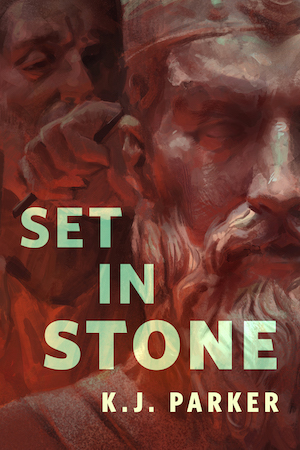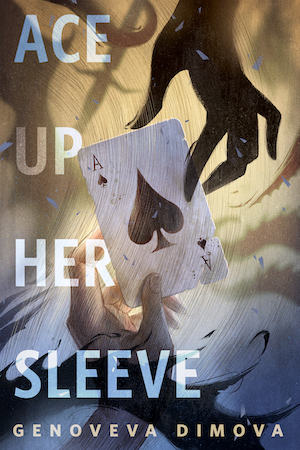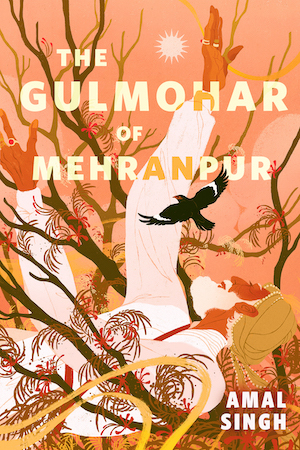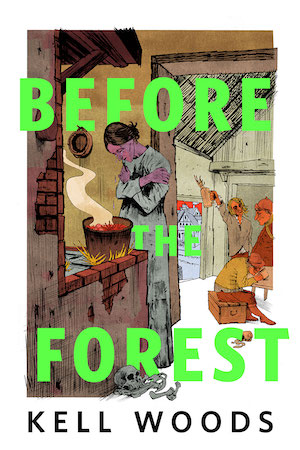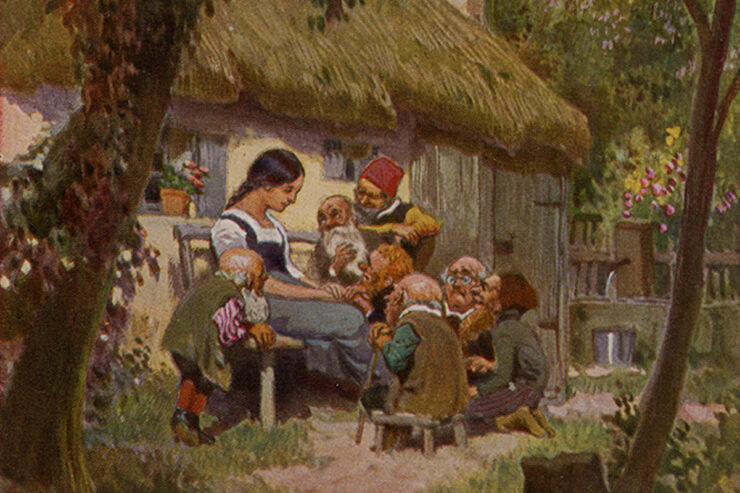For as long as humans have existed, we have told each other stories. And today, some of our oldest surviving stories are fairy tales. Passed from the mouths of our ancestors, we continue to rework these tales into all manner of shapes, using them to express the innumerable facets of our lived experience. They connect us. They help us understand each other. And they make our world a little more magical.
I touched upon Hans Christian Andersen’s “The Little Mermaid” in May’s article—Twelve Mermaid Poems to Celebrate MerMay—and it got me thinking about all the other fairy tales poets have drawn creative inspiration from. So this month, here are twelve poems which rethink our relationship with classic fairy tales, reshaping them into new stories, and using them to ask crucial questions.
“Fairy-tale Logic” by A.E. Stallings
Fairy tales are full of impossible tasks:
Gather the chin hairs of a man-eating goat,
Or cross a sulphuric lake in a leaky boat,
Select the prince from a row of identical masks,
Tiptoe up to a dragon where it basks…
Our first poem introduces the wonderful (and sometimes horrible) logic that dictates the world of fairy tales. Stallings’ examples (cross a sulphuric lake, select the prince from a row of masks) do not come from any specific story, but nonetheless each one feels perfectly at home in the fairy tale world.
“Sleeping Beauty” by K. Iver
You enter the stage as Lilac Fairy
& fairies make critical things happen,
though underneath your tulle brushing
sleep over a kingdom, you’re a mouse
who gets eaten every night…
Entwining three art forms—the fairy tale, the poem, and the ballet—Iver’s “Sleeping Beauty” weaves a gauzy, lilac-scented tale of queer love existing in the face of adversity. Here, the beauty’s sleep becomes a little like a closet; the spell it casts on its town is one of complacent rule-following and going through the motions. All of it encapsulated in a few beautiful moments snatched upon the ballet stage.
“Lost Cinderella” by Edith Weaver
Little rich girl, glittering with bells,
come running lightly as
the fawn of the fairytales…
First published in Poetry in 1947, “Lost Cinderella”is a richly atmospheric interpretation of the fairy tale princess: Cinderella is named in the title, but this creature could just as easily be any of them. Her journey takes her off the written path and into the woods, where prettiness and whimsy are juxtaposed against darkness and dismay.
“Shirt of Nettles, House of Thorns” by Nathalie F. Anderson
Where’s the girl ripe for piercing, who shuttered
her windows and latched fast her doors? Where’s the chink
to press an eye to? Where’s the coy lip to kiss?Oh prince, rip your hands, rip your heart out. Someone
walked through the briars with her eyes wide open…
This gorgeous poem by Nathalie F. Anderson is told in four parts—“Strange Seed,” “House of Thorns,” “Shirt of Nettles” and “Ever After”—traversing seamlessly from fairy tale to fairy tale with heady, evocative use of imagery. Some of its fairy tale references are quite obvious; others more obscure. But all work together to create a captivating narrative.
“How To Skin Your Wolf” by G.E. Woods
Carry a basket filled with sweets,
with ripened jams, with the thin blades
you sharpen in the gloaming…
Our fifth poem retells the story of Little Red Riding Hood, reversing its circumstances so that the titular Red is now the hunter, the Wolf the hunted. However, this is not the only twist.
“Shadowskin” by Shveta Thakrar
She would write her own story
Prick her own finger
Cast her own spell of bloom
And blood
And sing it to the world…
Shveta Thakrar’s take on the fairy tale draws from her background as a “writer of South Asian-flavored fantasy [and] social justice activist” (per her Strange Horizons bio). In incisive verse, “Shadowskin” calls out the (often unquestioned) racial inequalities inherent to many of the fairy tales we know and continue to retell today.
“Mr. Darcy” by Victoria Chang
did
Cinderella really love the prince or
just the prints on the curtains in the
ballroom…
Chang’s “Mr. Darcy” weaves the tale of Cinderella with other classic literary “fairy tales” to ask a poignant question: are these tales really all about true love, or is the allure of the rags-to-riches narrative more about class, wealth, and financial stability?
“Lying Flat” by Lynne Sargent
like it is the fault of bees
that there are no longer wildflowers
to sustain a stolen sunset.as though sleeping beauty
was a layabout
and not twice cursed…
Just as Thakrar and Chang use the fairy tale in their poetry to interrogate the complexities of racism and classism, Sargent takes “Sleeping Beauty” and asks us to think about disability and ableism. Their verse is unflinching in its takedown of ableism in the modern day—provocative, insightful, and beautiful to read. I keep repeating lines to myself, and suspect this poem will stay with me for a long time.
“Seven Swans” by Carina Bissett
Brothers dear, known only to me
as letters carved on coffin lids,
midnight visits and a wing’s caress —Do you think of me when drifting,
passing by clouds and dreams long lost?
This poem retells “The Six Swans” by the Brothers Grimm (which commonly also appears as “The Seven Swans.” Another well-known variant of the same tale is Hans Christian Andersen’s “The Wild Swans.”) Its tender, melancholy verse follows the princess from the tale on her self-sacrificing quest to save the family she loves.
“The Stepsister’s Story” by Emma Bull
You were not more beautiful
Spinning in a cloud of silk,
Laughing in spangle-light,
Than on that cold hearth…
It’s become increasingly common in recent times to see retellings of fairy tales from the perspectives of their villains: Maleficent and Cruella are just two examples of films which do this. But I have yet to see a retelling of “Cinderella” which puts itself into the mind of one of the stepsisters. This poem is suffused with empathy that lends a tragic cast to the fairy tale—and subverts its ending.
“Rapunzel: I Like the Quiet” by Jeannine Hall Gailey
like layers of golden hair. Stacks of books
and I can sing as loud as I please all day and night…
Our penultimate poem is a cheerful one. Gailey’s reinterpretation of “Rapunzel” paints the tower as a place of liberation, emphasising the blissful freedom of privacy, peace and quiet.
“The Pea Princess” by Colleen Mills
She arches like a bowed branch of willow,
Quivering from stem to leaf.
With each flex of the wrists,
Roll of a shoulder,
Gentle realignment of the ribs,
The lump burrows deeper…
Last of all, a poem which aptly summarises our inability to ignore the fairy tale’s enduring presence as a literary form: Colleen Mills’ retelling of “The Princess and the Pea.” (Although I must say, I enjoy fairy tales far more than I enjoy finding a stray crumb in bed.) Mills evocatively conjures the feeling of an irritating pea beneath layers of mattress in this elegant verse.
Do you have a favourite fairy tale—one you remember sentimentally from childhood, perhaps, or one that speaks to you more deeply than the others? (I do. It’s “Rapunzel.”) Feel free to share it in the comments—alongside any poetic adaptations you know of!


